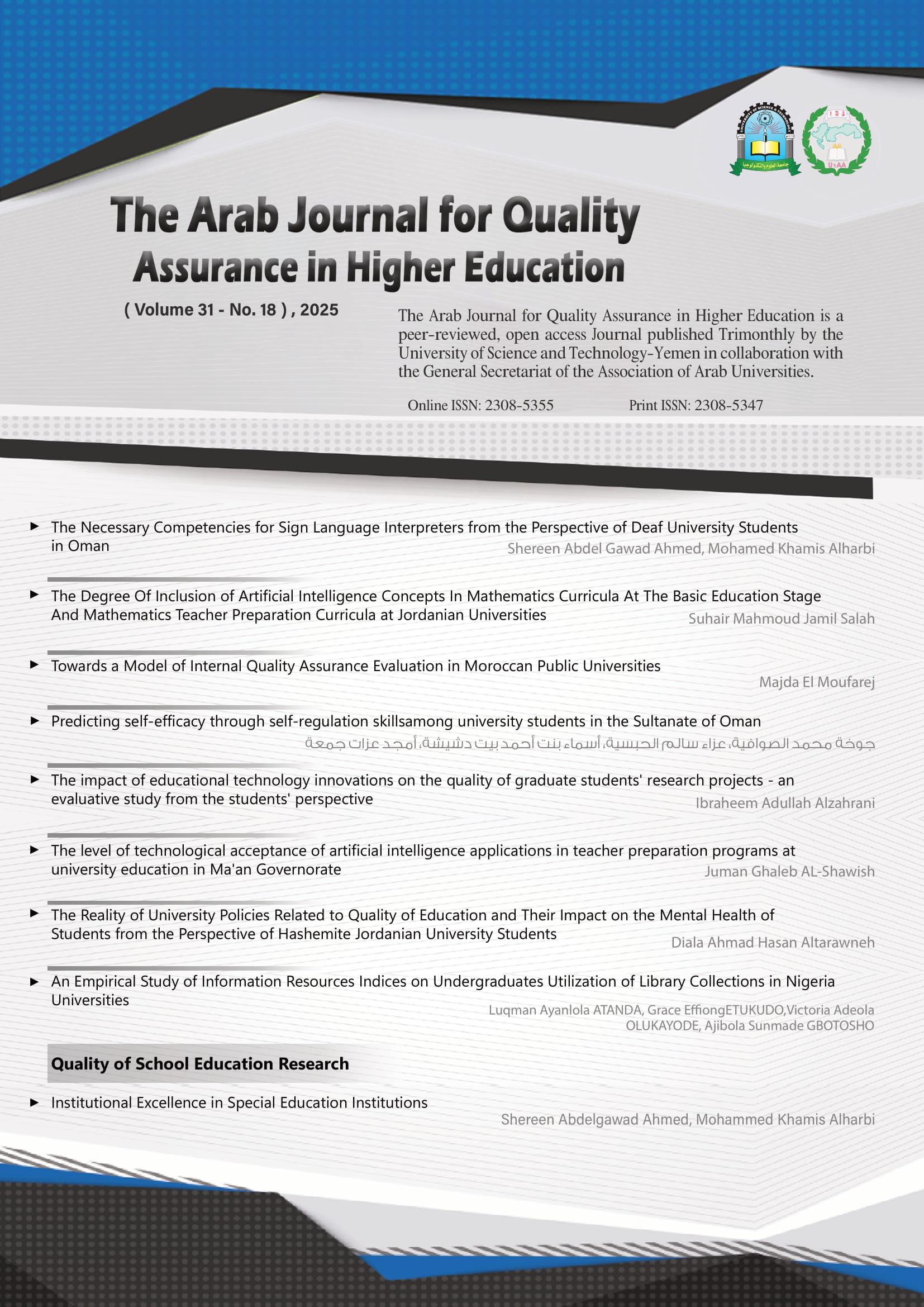The level of technological acceptance of artificial intelligence applications in teacher preparation programs at university education in Ma'an Governorate
##plugins.themes.bootstrap3.article.main##
Abstract
The study aimed to investigate the impact of using artificial intelligence applications on improving the educational process, and the extent to which teachers in university teacher preparation programs at the College of Science accept these applications based on variables such as gender, academic year, and training courses. The study adopted a descriptive analytical approach and used a questionnaire consisting of multiple dimensions: expected ease of use and behavioral intentions. The sample included a number of students from the College of Science enrolled in teacher preparation programs in Ma'an Governorate, who were randomly selected. The results showed a neutral trend toward accepting artificial intelligence applications, with no statistically significant differences between the responses of teacher educators attributed to academic year, gender, or the number of training courses. The study recommended strengthening vocational training programs related to artificial intelligence technology, providing a supportive infrastructure, and integrating these technologies into curricula to improve the quality of education. It also encouraged innovation and conducted further future studies.
##plugins.themes.bootstrap3.article.details##
artificial intelligence, acceptance level, science, teacher preparation programs, university education.

This work is licensed under a Creative Commons Attribution 4.0 International License.
AJQAHE publishes Open Access articles under the Creative Commons Attribution (CC BY) license. If author (s) submit their article for consideration by AJQAHE, they agree to have the CC BY license applied to their work, which means that it may be reused in any form provided that the author (s) and the journal are properly cited. Under this license, author(s) also preserve the right of reusing the content of their article provided that they cite the AJQAHE.








